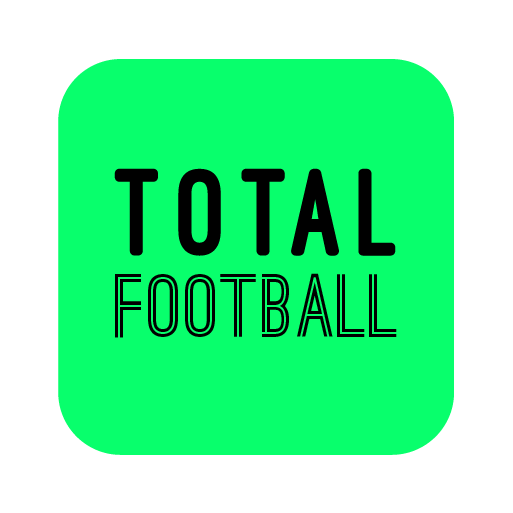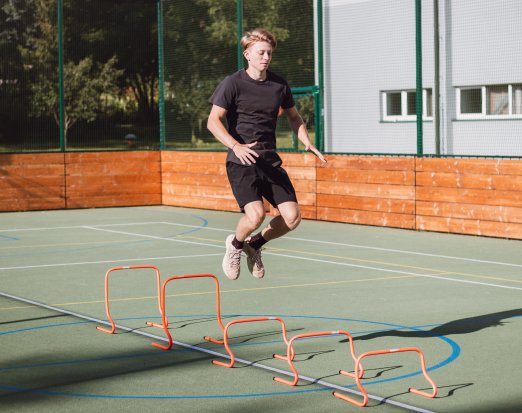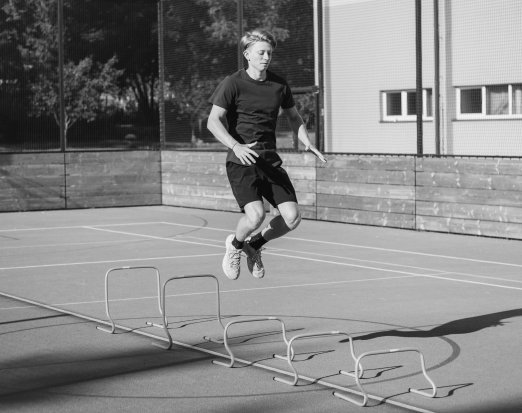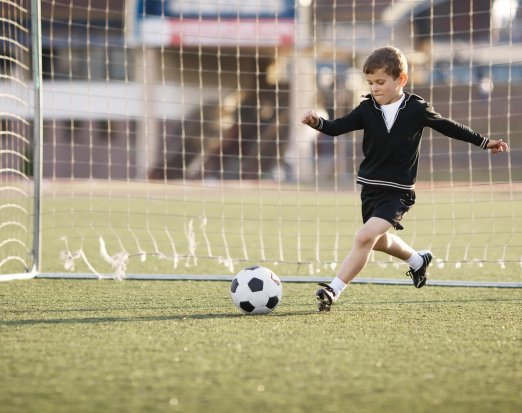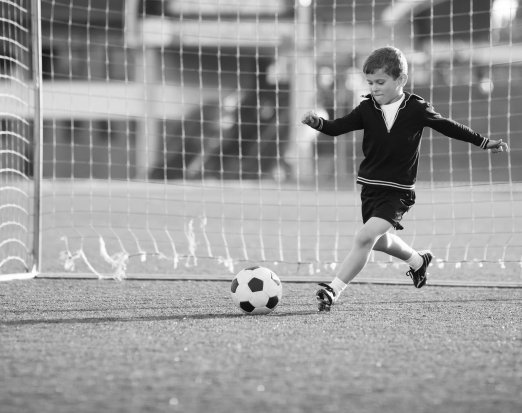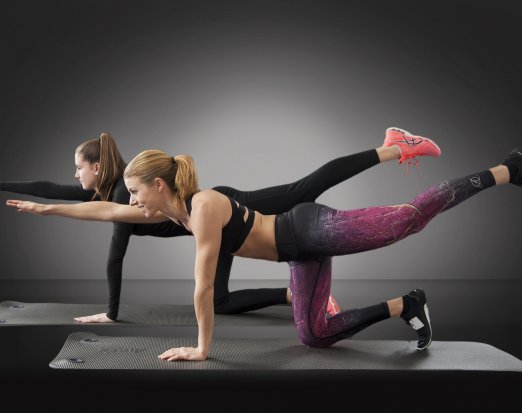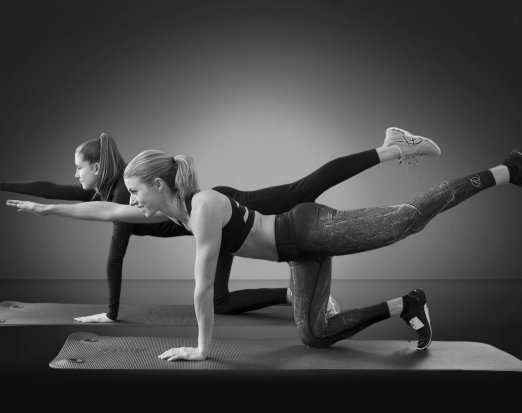Principles of Training

Over the past few weeks, our blogs have focused on providing information to athletes on why we train the way that we do, through long term athletic development and when we should train through periodisation.
This week, we look at the how to!
Every individual is different. We progress at different rates, have different skill levels and attributes, and therefore, to meet the individual's needs, training, rest and recovery must be considered to get the best from us.
Even within the most successful teams, the journey that each athlete is on, is very much an individual one, the principles of training recognise this and following them can lead to you getting the most out of your training sessions.
The Principles of Training Include:
- Specificity
- Individualisation
- Progressive Overload
- Variation
- Reversibility
SPECIFICITY
As we have previously discussed, at the younger age groups training shouldn’t be specific, it should be unstructured, it should look at developing fundamental movement skills and it should also encourage children to take part in a range of sports and activities to develop skill and to create a foundation for overall fitness.
Post Peak Height Velocity, as training becomes more structured, it is key that training meets the needs of the athlete - sometimes called an athlete profile or needs analysis - and ensures that they are sport ready. For example, a sprinter requires a high level of strength, reactive strength and power, By understanding the needs of the athlete and the demands of the sport, exercises and drills can be prescribed to transfer to improve areas of the sport and drive overall performance. Are you developing your strength, speed and power and becoming Sport Ready?
INDIVIDUALISATION
Every athlete is different, we are all on our own journeys, so make sure your training programme is suitable for you.
Coaches that work with children will understand that they grow at different rates and at different ages, for example, a team of footballers with the biological age of 11 might have children that have a physiological age range of 9-13, those children that are going through a growth spurt may need additional rest, but also, with a physiological age range of 4 years, sessions should be differentiated to meet the needs of every player.
Each individual will adapt and respond to training slightly differently, so it is important to monitor development and improvements, as this will help with long-term development, performance and even injury reduction. This can be completed by recording your training and/or through a range of tests.
It is also important to take lifestyle into account, especially in the older age groups. Athletes that are not at elite level may also have jobs during the day making rest and recovery from sessions more challenging, this needs to be considered when planning your sessions.
PROGRESSIVE OVERLOAD
As you train, the training or exercise drives a mechanical and physiological stimulus. The more the body is exposed to this stimulus the body learns and adapts. We collectively call this 'training' or 'fitness improvements'.
Consider a beginner going for a one mile run. At first this would be very challenging, on the mechanical parts of the body, the muscle joints and the physiological system. The more they run this mile, the easier it gets, going back to the principles of specificity. To overload the training, we can make certain decisions - try and run the mile faster or increase the distance. Running faster or for longer are good examples of progressive overload. We can take the same principle with resistance training. By starting with a resistance you can lift 10 times, eventually you will be able to complete more repetitions. At this point you can add more resistance as this will drive more strength adaptation.
To help athletes with overloading their body, many use FITT, which we introduced you to in our last blog.
- Frequency – The number of times you train
- Intensity – Expressed as the amount of load you lift, or how fast you move
- Time – How long are you training for
- Type - The mode of training - Resistance Training, Endurance Training
VARIATION
Variation is good to keep motivation high and help drive motor skill learning. Doing the same routine over and over again can become tedious and the training stimulus may start to reduce, affecting progress.
Doing something different could be a little bit of fun for the athlete, but there are also many transferable skills so consider completing an activity that uses or drives a new skill as this may help with long-term changes.
REVERSIBILITY
Training is about consistency; it is important that athletes train regularly, as the body will not adapt if the stimulus is too low or not frequent enough. Additionally, if the frequency is too low and/or the athlete stops training, even if they continue to play sport, their overall fitness levels, especially strength and power, will decline and revert back to a baseline. It is important to consider, and know, the difference between a progressive training and maintenance.
Why not check out some of our latest blogs, they will provide you with some additional information regarding taking ownership of your own training and unleashing your potential, and be sure to visit our website where you will find information on our sport specific training apps and strength and conditioning support for all sports.
Want to become a better footballer?
Our Sports Apps below can help
The Total Football App, is designed to support players of all ages and skill levels. It is the only Football Coaching App that integrates 5 phases of skill acquisition and long-term athletic development, meaning that all sessions and activities are designed to meet your current skill level whether you are just starting out, or are an experienced academy player. All our turning sessions are designed by UEFA Qualified Coaches and are supported by further sessions in:
Ensuring that players aren’t just practicing but are practicing with the highest quality. We also have a range of physical development practices, healthy lifestyle sessions, and psychological tips to help develop the total footballer. If your child needs help developing their turning, or any part of their game, you can try the app for free now!
Strength and Conditioning Platform for Clubs and Academies
Our Total S&C platform helps coaches to deliver a LTAD and S&C programme efficiently to a large number of athletes across all age groups playing different sports.
Our Strength & Conditioning platform consists of a Portal for the coaching team, enabling them to modify training sessions, monitor players training history, input test results and identify players who are sports ready. The athletes are provided their own S&C Player App which allows them to take control of their own training, self-test, log exercise history and track progress.
We get athletes sport ready. We reduce overuse injuries and burn out. We help to develop independent and healthy athletes.
- Automated session generator saves time
- Monitor athlete adherence and progress
- Online management portal for coaches
- Training App for all athletes
- Testing and profiling to identify sport readiness
